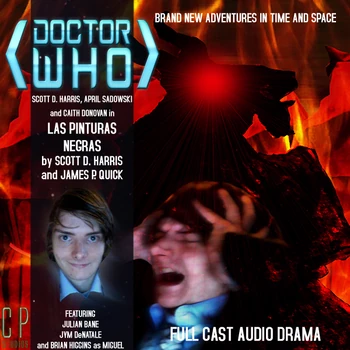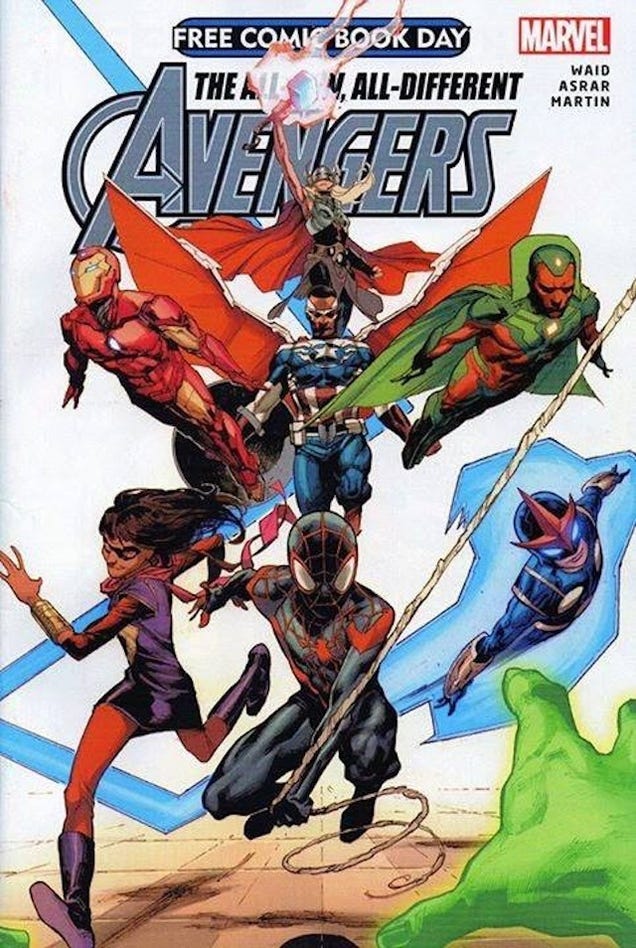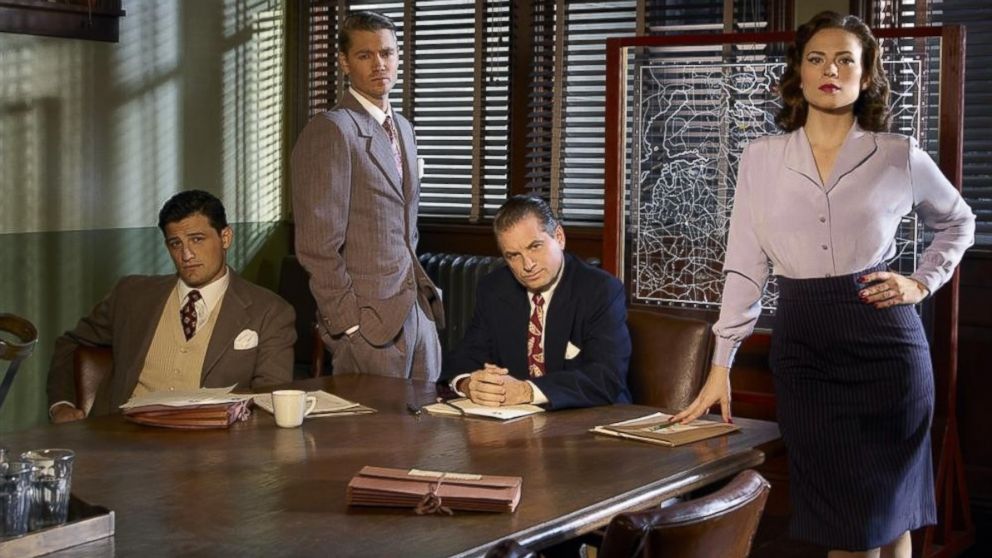Leonard Nimoy died just a few days ago. His loss is felt keenly by
so many of us. Through
Star Trek,
he reached millions as the wise, complex character of Spock. In what
could easily have been, under a less talented actor, a monotone,
robotic performance, Nimoy took the wellworn character of the
emotionless alien and made him into a charismatic, compassionate and
witty character, and, in time, an icon. Half-human, half-Vulcan,
Spock spent much of his time in the
Star Trek series
attempting to better himself as a Vulcan, to live his life by logic
and rationality, and to bury his emotions and his human side. Over
time, his understanding and acceptance of humanity improved, as his
friendship with his shipmates grew. Nimoy's ownership of the role can
be evidenced by the fact that he created two of the concepts that
everyone recognises as Vulcan: the V-shaped Vulcan salute and the
legendary Vulcan nerve pinch. As Spock, Nimoy was part of the
triumvirate that made
Star Trek the
beloved series it remains today, along with DeForest Kelley as Dr.
McCoy and William Shatner as Captain Kirk. Sadly, of these three,
only Shatner remains.
He was the only actor to
have appeared in every episode of the original
Star Trek series
and its animated spin-off; Shatner came close, of course, but did not
appear in the original pilot episode “The Cage” or the animated
episode “The Slaver Weapon.” Early plans for the sequel series,
known as both
Star Trek II and
Star Trek: Phase II,
were altered to feature a new Vulcan character named Xon after Nimoy
declined to return. However, once these plans advanced to becoming
feature film productions, Nimoy signed up again, not only appearing
as Spock in the first six
Star Trek movies,
but assisting with the writing of four of them, and directing both
Star Trek III and
Star
Trek IV. In the course of these
films, Spock went from contemplating the complete purging of his
emotions, to fully accepting his human side and the strength it gave
him. He gave his life for his friends, returned from the dead and
continued his adventures in Starfleet. This wasn't the limit of his
time in the role, of course; he also appeared in two episodes of
Star
Trek: The Next Generation, now
in the role of ambassador, and in both of the most recent movies,
playing the aged “Spock Prime” opposite Zachary Quinto as his
alternative, younger counterpart. Plus, there were the interviews,
the convention appearances, the audio productions and voiceovers for
computer games, including the 2009 launch of
Star Trek
Online.
His relationship with the
character was strained for some years, with the career defining role
coming to overshadow much of his other work. Nimoy was an
accomplished director, musician and poet, yet was, and always will
be, best remembered for his time as Spock. The first volume of his
autobiography, published in 1977 during the period in which he was
distancing himself from the series, was entitled
I am Not
Spock, a clear indication of his
feelings on the situation. By 1995, after the success of the
Star
Trek movies, his attitudes had
changed, and he wrote
I am Spock,
in part to undo the damage he felt he had caused with his first book,
which many considered made him sound bitter about the character that
given him such success. For me, and so many others, Leonard Nimoy
will forever be Spock, and while I will always enjoy and admire his
roles on series such as
The Outer Limits and
films including
Invasion of the Bodysnatchers,
and his late career roles and send-up appearances (such as his
wonderful guest slots on
The Simpsons and
Futurama), it is for
his time on
Star Trek that
I will best remember him for.
What follows is a rundown of my
top ten moments for Leonard Nimoy as Spock. There was so much more to
the man, of course. Visit
iReckon for E.G. Wolverson's top picks for Not Spock.
 10) “Return to Tomorrow” -
Spock is possessed by Henoch
10) “Return to Tomorrow” -
Spock is possessed by Henoch
A
rare opportunity for Nimoy to play a different character in
Star
Trek, as Spock's body is used by
the mind one of the last three survivors of a dead planet. Henoch is
charming, sexual and manipulative, and Nimoy plays the villain with
aplomb.
9) “The Enemy Within” -
Spock subdues Kirk
A
classic episode, which sees Kirk split into two beings by a
transporter malfunction: one timid and weak, one strong but vicious.
Faced with the wild Kirk, Spock is forced to disable him. Though the
script called for Spock to pistol whip his captain into
insensibility, Nimoy objected, considering this too violent for
Spock. He came up with an alternative, and the Vulcan nerve pinch was
born.
8) Star Trek: The
Motion Picture – Spock recovers his emotions
The
first
Star Trek movie
sees Spock on a journey from his coldest ever persona to finally
accepting his human side. He begins the film on Vulcan, coming close
to fulfilling the ceremony that will finally purge him of all
emotion, only to sense the call of V'Ger, the powerful space
intelligence, which stirs his human side. Returning to the
Enterprise
and his friends, he remains utterly passionless – until communion
with V'Ger causes him to realise what they both are missing. Cold
knowledge and logic are nothing without emotion. As Spock finally
come to terms with his own nature, so Nimoy returns to the role he
had sought to leave behind, and embraces it.
7) “Mirror, Mirror” -
Parallel Spock
.jpg)
An
episode that has pervaded into popular consciousness, “Mirror,
Mirror” utilises and defines a classic sci-fi trope: the parallel
universe. Kirk, Scott,y, Bones and Uhura are cast into an alternative
world in which they serve on the Imperial Starship
Enterprise,
where the counterparts of their crewmates are brutal, selfish and
cruel. Then there's the Mirror Spock, complete with goatee beard.
Spock always had a touch of the devil in his looks, and never more so
than here. The alter ego with an “evil beard” has become a
shorthand in sci-fi, fantasy and comedy, but both the script and
Nimoy's performance are far subtler than that, for Mirror Spock is
not an evil man, but as coldly pragmatic and logical as his
counterpart in the regular, more peaceful universe.
6) Star Trek (2009)
– The meeting of the Spocks
Nimoy's
involvement in the reboot could have been little more than a cameo
and some handy exposition, but what we got was the welcome return of
an old friend. His earlier scenes, in which he helps his
friends-to-be Kirk and Scotty onto the right path work well, but it's
his final meeting with his own, younger self that sticks in the mind
most. The contrast between the earlier Spock – repressed, superior,
yet naïve – and his older self – wise, content and comfortable
with his human side – is fascinating.
5) “This Side of Paradise”
- Spock and Leila
A
wonderful exploration of Spock's past and the human side he keeps
buried. On the planet Omicron he is reunited with Leila Kolomi, a
woman from his past who is very much in love with him. Spores
released by plants on Omicron give humans a blissful high, and remove
Spock's blocks on his emotions, allowing him to love Leila back.
Nimoy plays Spock in a completely different way to normal, yet
entirely recognisable as the same character. The final moments
between Leila and Spock are tragic; Nimoy plays his recovered state
with a deep, suppressed sadness that is hugely affecting to watch.
4) “The Galileo
Seven” - Spock learns how to
command
This
episode is all about Spock. Told largely from his point of view,
Spock is dropped into command when his shuttle is downed on an
uncharted planetoid. With aggressive natives outside, a frightened
and alienated team inside, and a rapidly closing window for rescue,
Spock tries every logical course open until he finally acts in
desperation. It's a great example of Nimoy's ability to make Spock
both entirely alien yet wholly relatable.
3) “The Naked Time” -
Spock struggles with his emotions
A
very well-remembered episode, which sees the crew of the
Enterprise
driven into a state of
hyper-emotional intoxication by a mysterious infectious agent. While
the crew go to pieces around him, Spock struggles to maintain his own
control. Nimoy puts in a wonderfully subtle performance,
simultaneously portraying Spock's desperate attempt to hold himself
together, and his previously unspoken desire to allow his emotions
free reign like his crewmates.
 2) “Amok Time” - The onset
of pon farr
2) “Amok Time” - The onset
of pon farr
Another episode
all about Spock, in which we learn more about Vulcan life and culture
than in any other story. His biology driving him to mate, Spock loses
his self control, becoming violent and unpredictable. Some of Nimoy's
best scenes involve Spock's struggle to maintain his rationality as
his emotions threaten to erupt. This episode is the ultimate
expression of that side of Spock's character, only this time it isn't
his human half that threatens his composure – it's pure Vulcan
drive. Nimoy goes through every powerful emotion in this episode:
shame, lust, rage, grief and joy.
1) Star Trek II: The
Wrath of Khan – Spock's
sacrifice
Arguably
the best of the
Star Trek films,
The Wrath of Khan is
very much Kirk's story. However, Kirk story is incomplete without
Spock (one of the reasons why
Star Trek Generations, the
first of the films not to feature Spock, doesn't quite work). While
Spock has some fine interplay with McCoy, and an interesting
relationship with his Vulcan protege, Kirstie Alley's Saavik. It is,
however, the scenes between Kirk and Spock where the film has its
emotional heart, and no more so than in those final, heart-wrenching
moments. Khan is dead, but he's taken the
Enterprise
with him. The engine core is about to blow, unless someone goes into
the lethally irradiated chamber and shuts it down. The final
devastating moments between Kirk and Spock, separated by a
transparent panel, as Spock, blinded and dying, gives his final words
to his friend. A justifiably beloved scene by Trekkies and cinema
goers alike, it was, at one point, intended to be the final death of
Spock, and while his popularity meant a return for the character was
decided upon before the film was even completed, it would have stood
as a perfect send-off for the character. Brave, emotional yet
perfectly logical, Spock sacrifices himself for his crew, and his
friends. It's going to be a very difficult scene to watch from now
on.


.jpg/650px-Francisco_de_Goya_y_Lucientes_-_Witches'_Sabbath_(The_Great_He-Goat).jpg)














.jpg)


